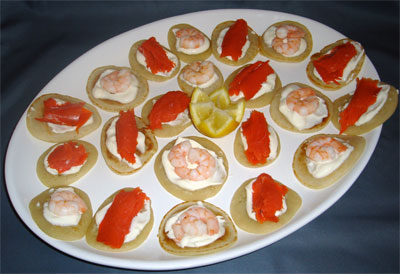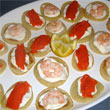
When one thinks about Russia, be it the feasts of Ivan the Terrible, the European-style banquets of Peter the Great or even the large socio-political functions of Stalin, one conjures the images of excess, indulgence and merriment, all at the expense of the poverty-stricken masses. But the truth is, even with little money, the Russians know how to put on a good spread for their guests. Even those with little will open their door and greet their guests with the offering of a zakuski (закуски in Cyrillic).
Zakuski can be anything from a simple appetiser to a laden table. The tradition began in the decadent Russian manor houses of the 18th Century when the tradition of opening a meal with vodka, bread and cold soups, gave way to open sandwiches, meat and fish. Although the style of food changed, the diet remained relatively the same as before, with the exception of the introduction of cheese.
The Zakuski table would be ready to welcome guests inside from the harsh climate. A bottle of vodka, or more popular among the elite, European Champagne or wines, took pride of place, as did the samovar full with hot tea. Guests were invited to help themselves, mirroring the hospitality the Russians are famed for.

Among the delicacies, guests enjoyed salted cucumbers, sour cream (smetana), pickles, black bread and a simple meat or fish dishes. The zakuski was designed to be quite different to the main meal, so if the main course was to be fish, meat appetisers were provided and vice versa. Ensuring the table was an array of vibrant colours was important so the choice of ingredients was key: carrots, beetroot, cucumbers etc.
Blinis are an ideal component of the zakuski table.
Find out more about making blinis here…
Keep your eyes peeled for further information about this Russian tradition in Zakuski Part II.










 Today thousands of young Poles are celebrating their futures and hoping to catch a glimpse of their love-to-be, as part of St Andrew’s day. Traditional belief has it that on the night before St Andrew’s day, a young woman is able to “see” her future husband – although today both women and men celebrate the day with equal enthusiasm, hoping to discover the love of their life.
Today thousands of young Poles are celebrating their futures and hoping to catch a glimpse of their love-to-be, as part of St Andrew’s day. Traditional belief has it that on the night before St Andrew’s day, a young woman is able to “see” her future husband – although today both women and men celebrate the day with equal enthusiasm, hoping to discover the love of their life.
